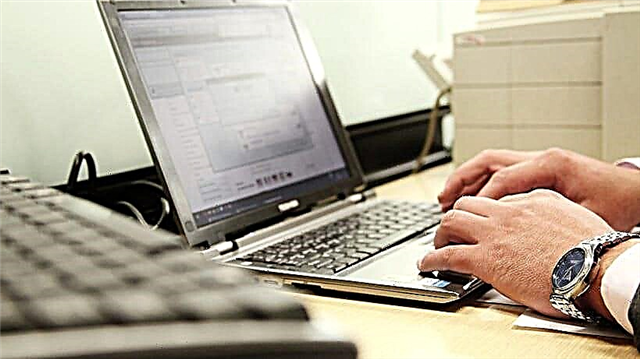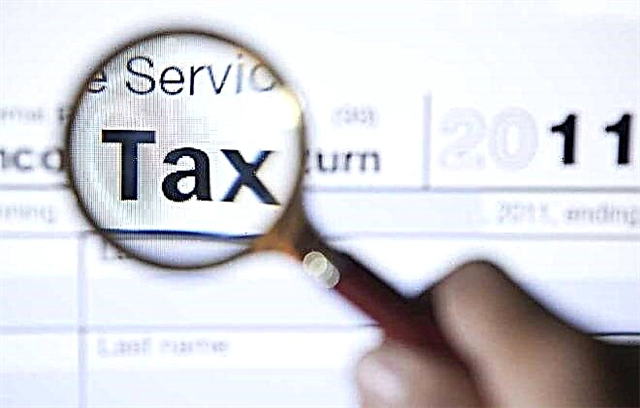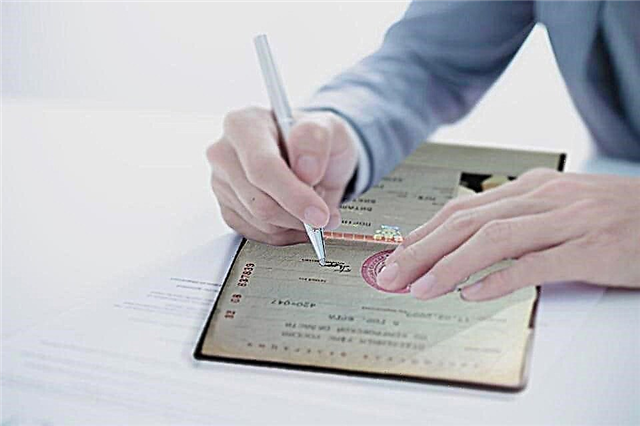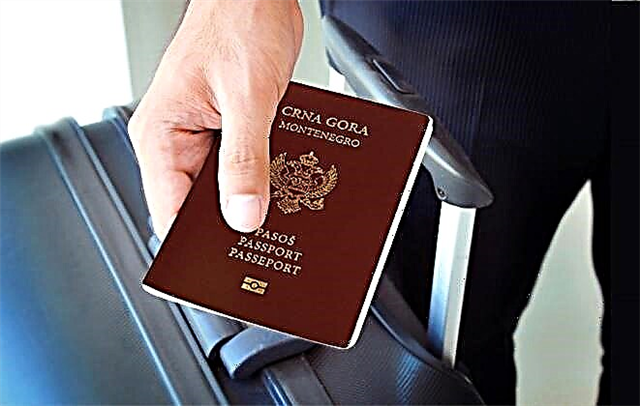Over the past century, no monetary unit has gained such importance as the US dollar (letter code ─ USD). The US currency today is not just one of the main reserve currencies, the dynamics of quotations of which are closely monitored by world exchanges. No other money knew about such a massive issue. Over 80% of world trade turnover is calculated in USD, the share of finance in the SWIFT system exceeds 40%, plus the dollar today even replaces the national currency in certain countries.

History of American money
The official history of the American dollar began 234 years ago, when the first President of the United States, Thomas Jefferson, proclaimed it the national currency. In fact, the dollar has long been known, and not only in America, but also in Europe.
The name comes from the thaler, a silver coin weighing about 27 grams, minted in Germany and Bohemia since 1519 and used in maritime trade. In England, any large silver coin, but with a slightly changed name "dollar", has become so called. The first Dutch settlers also used thalers, so the choice of the name was obvious.
The US dollar (first also from silver) began to be minted in 1794, when the Philadelphia Mint was established. By this time it was already called "bucks" - from the word backskins, meaning animal skins that were used to barter with the Indians.
The first banknotes appeared only with the outbreak of the Civil War: on July 17, 1861, Congress passed an act obliging the Treasury to issue new banknotes for $ 60 million. The order was filled by the New York company American Bank Note Co.
The first US paper currency was black and white, and counterfeits quickly flooded the market. In 1869, the Treasury Department signed a contract with Philadelphia's Messer J. M. & Cox to produce watermarked gray-green paper. The color was not chosen by chance: most of the government papers at that time were issued on green stamped paper, which was supposed to inspire the confidence of citizens.
Since then, the dollar has not changed much in appearance, it looks almost the same today. Only in 2004 banknotes of other colors began to be printed.
Banknotes and coins
Modern US banknotes are made from 25% linen and 75% cotton thread, so they do not turn yellow. Only one company produces paper. Selling it to anyone other than the US federal government is prohibited. The paint formula is a secret.
The average life of a note, depending on the denomination, is from 22 to 60 months. Every day, about 35 million banknotes of various denominations are issued for a total amount of over $ 600 million, 95% of which are used to replace worn-out money.
The cost of making a bill is about 6 cents. All have an independent size of 156 by 66 mm and a weight of about 1 gram.
In circulation there are banknotes of denominations of 1, 2, 5, 10, 20, 50 and 100 dollars. A limited number of banknotes of 500, 1,000, 5,000, 10,000 dollars, issued before 1945, have been withdrawn from circulation since 1969, when electronic money began to be used in the United States.
The $ 100,000 banknotes issued in 1934 were used only in the internal calculations of the Federal Reserve System (FRS). The basic design with portraits of US presidents and statesmen was approved in 1928.
There are coins in circulation with face value:
- 1 cent (1 ¢) - in the people of "penny";
- 5 cents (5 ¢) - nickel;
- 10 cents (10 ¢) - "dime";
- 25 cents (25 ¢) - "quarter" (English quarter - a quarter);
- 50 cents (50 ¢) ─ "half" (English half - half);
- 1 dollar ($ 1) - "buck" (English buck).
Commemorative, commemorative and investment coins are also minted.
Dollar exchange rate today
The US currency is subject to a free floating rate regime, which ideally depends on the country's economy. The official exchange rate of the US dollar to the ruble is determined by the Central Bank of the Russian Federation in the first half of each business day. At the beginning of 2021, it fluctuates between 64-65 rubles per dollar.
The difference between the bank buying and selling rates (spread) can change during the day regardless of the Central Bank rate, differ for cash and non-cash exchange operations, as well as for currency conversion when paying with bank cards.
The official euro exchange rate in US banks can be found on the Bank of America portal or in the Data section of the FRS website. You should be interested in the current exchange rates on the portals of specific banks. On average, today for 1 euro you can get 1.05-1.1 US dollars.
American banks
 America is a country of banks. There are several thousand financial institutions with a huge number of branches where you can withdraw cash, receive a money order or exchange foreign currency. Branches or separate divisions of City Bank, American Express and Goldman Sachs are located in Russia.
America is a country of banks. There are several thousand financial institutions with a huge number of branches where you can withdraw cash, receive a money order or exchange foreign currency. Branches or separate divisions of City Bank, American Express and Goldman Sachs are located in Russia.
Banks in the United States are open every day from 9:00 am to 3:00 pm - 5:00 pm, excluding Saturdays, Sundays and public holidays. As a rule, one day a week branches work an hour longer, and some are open even on weekends on a reduced schedule (before lunch).
You can receive an urgent transfer via Western Union, MoneyGram or Xpress Money at major banks and post offices. Transaction times to America are the shortest in the world.
Cashless payment and bank cards
The United States has one of the highest levels of non-cash payments. Basically, it is customary here to use bank cards, and purchases worth over $ 100 are paid only with them.
Both debit and credit cards are used. Priority is given to cards with chips and PayPass contactless payment technology. Plastic without additional protection (without a magnetic strip) is rarely accepted.
Payment using Apple Pay and Samsung Pay mobile technologies has become widespread.
When making payments with a ruble card, here you need to take into account the conversion rate and bank commission. Depending on the service conditions, the losses will be from 2 to 10%.
Where in the USA you can pay by credit card
Visa, MasterCard, Diners Club, American Express and others are accepted almost everywhere without restrictions, except for national parks, where there is no Internet, and sometimes even electricity.
Unfortunately, Mir cards do not yet provide such an opportunity.
You cannot buy fuel with cash at automatic filling stations, and a postal code is required for card payments. In a taxi, you can pay both in cash and by card, and in buses - in cash; moreover, the driver in most cases does not accept a different amount than the amount due for the journey, so you should not count on an exchange.
Sometimes when paying, Americans ask for an ID to make sure that the card is yours. It is enough to show your passport, but in this case it is desirable that the card be personal.
Withdrawing funds from a bank card in the USA
Withdrawing cash from a bank card in the States is absolutely not a problem. The ATM network is one of the widest in the world.
Most devices accept bank cards of international payment systems, even if they were issued by Russian banks. Cash dispensed at a time is usually limited to between $ 300 and $ 1,000. Banking fees range from $ 3-5 per transaction.
Cash in America
Cash is considered bad form in the United States. 100 dollar bills are considered a great luxury here, it can even be difficult to change them, since they are mostly small in circulation.
Cash will come in handy when buying souvenirs during excursions, to pay for travel on public transport and in rather rare places where payment is only possible with real money.The stock should include bills of different denominations and, of course, also coins.
It is better to change rubles for dollars in the USA even at home. In case of blocking the card, prudently deferring $ 300-500 will help to avoid financial difficulties.
By the way, it is better to take several maps with you on a trip to the States. It is advisable to have one of them on credit if you plan to rent a car. The import of currency into the country is not limited.
Withdrawing funds from an account
If a small amount of cash is required and there is no ATM or bank nearby, the card can be cashed at a store or supermarket. The service is called cash-out.
When paying at the checkout by card, it is enough to request the issuance of the required amount. The cashier will debit it from your account and hand it over. If we are talking about $ 20, there will be no questions. When a higher amount is needed, a passport will be required.
Traveler's checks
 Travelers Checks or travelers checks are securities considered to be a good alternative to "real" money when it is necessary to protect finances from theft or loss. In the United States, American Express and Visa checks are very popular, which are accepted as units of account when paying for almost any goods and services, as well as offers from Thomas Cook, CitiCorp.
Travelers Checks or travelers checks are securities considered to be a good alternative to "real" money when it is necessary to protect finances from theft or loss. In the United States, American Express and Visa checks are very popular, which are accepted as units of account when paying for almost any goods and services, as well as offers from Thomas Cook, CitiCorp.
USD travel checks can be cashed in hotels, large stores and restaurants. In addition, no one will ever block a traveler's check.
Tipping in America
Tipping in the USA or tips (tips), as they are called here, is customary to give everywhere, for any service rendered to you personally. Moreover, the amount is included in the invoice before taxes.
It is not accepted to leave a tip for medical and government services ─ here it is considered as a bribe or bribery.
The size of tips for maids, elevators, messengers, bell boys and porters in hotels is determined by the client. This is usually a dollar or two for a one-time aid.
In taxis and expensive restaurants, it is customary to leave 15-20% of the check amount. If payment is made by credit card, the waiter will bring a ready invoice, which will contain two blank lines:
- tips;
- total is the total amount.
The client must fill in both, otherwise the restaurant employees will put the numbers themselves, indicating the increased amount. Tipping is not accepted at fast food outlets, although a donation box can be found next to the cashier.
How Much Money Will It Take in America
How much money to take in the USA, decide for yourself, although we can say that the more the better. America is a land of endless possibilities. Including all conditions for unlimited spending of finance have been created here. Where and how long you plan to live, how to eat, move around and rest, you need to decide before the trip.
By the way, ordinary Americans do not like a spender and cost an average of $ 30-50 per day. If you add accommodation in an inexpensive motel or hotel apartment, you get around $ 100-150 per person.
- Dinner in a restaurant for two can cost the same, the average check in inexpensive establishments is $ 12-20, and breakfast in a cafe costs $ 15-20 for two.
- The price of food in the United States is lower than in Europe.
- Public transport fares on average $ 6-8 / day.
- A ticket to the museum can cost from $ 5 to $ 20, and to observation decks, zoos or cinema - $ 20-40.
- A trip to the theater on Broadway, Disneyland, for a sports match can cost from 70 to 200 dollars.
Even if you don't spend a lot, less than $ 500 per person for 2 weeks shouldn't be. On practice, the amount of expenses increases two to three times from the planned.
Taxes and tax-free
The Tax Free system in the United States does not officially work. This is due to the absence of value added tax.
In America, there is a sales tax called Sailes Tax, which can be up to 10% (the amount depends on the state) and which is usually not indicated on the price tags. Therefore, it can surprise you at the checkout, if you don't know.
You can ask the seller about the amount of Sailes Tax. By the way, in the eastern part of the country the tax is lower. In some states (Oregon, Montana, New Hampshire, Delaware), it is zero.
But in one state, refunds are still practiced: for example, on the TaxFreeShopping website you can get acquainted with an interesting system operating in Texas.
Fun facts about the dollar
 The US national currency has a history with a number of interesting facts.
The US national currency has a history with a number of interesting facts.
- The inscription In God We Thrust first appeared on coins in 1864. The phrase is borrowed from the United States anthem, written by Francis Scott Key, and is intended to serve as a reminder of the Almighty's acceptance of the side of the North in the Civil War. Since 1956, it has been adorned with banknotes as a sign of opposition to the atheistic USSR.
- Dollar cocaine. As it turns out, it's not just bacteria that live on American money. A 2009 investigation by the University of Massachusetts Dartmouth found that 90% of the bills in circulation carried traces of cocaine. The drug is deposited on banknotes as a result of cocaine inhalation and drug trafficking.
- Masonic signs. The dollar bill features a pyramid as part of the Great Seal of the United States. The seal consists of 13 levels, symbolizing the 13 states originally incorporated into the United States. The obverse depicts a bald eagle with 13 arrows and an olive branch, whose head is turned towards the branch, which symbolizes the preference for peace. The Latin phrase Annuit Cœptis means "Our undertakings are blessed", Novus Ordo Seclorum - "New order of the era." The "All-Seeing Eye" or "Eye of Providence" is also presented here. These and other elements are considered Masonic by conspiracy theorists.
- Mysterious clock. The new $ 100 bill features the Tower of Independence Hall with the clock showing 4:10. At the same time, the Bureau of Engraving and Printing does not know why this particular time is indicated.
- The woman on the dollar bill never showed up. It was not until 1886 that a portrait of Martha Washington adorned the obverse of the One Dollar Silver Certificate.
- The best investment. In 2006, banknotes of the 1890 issue with a par value of $ 1,000 were sold for $ 2 million 255 thousand.
- Trees at the White House, which are not. The elms depicted on the twenty dollar bill did indeed grow near the White House until 2006.
- Dollar sign. The peso, which ran parallel to the dollar in the 18th century, was designated on paper by the Latin letters PS. In 1778, New Orleans businessman Oliver Pollock first used the dollar abbreviation by superimposing two letters on top of each other.
Few people know that the dollar became the world's first currency based on the unified decimal system. It not only formed the basis of the Bretton Woods system, but also gave rise to a controversy, named after the first formulation of the paradox in 1960, Robert Triffin.
Its essence is as follows. The emission of the dollar is much higher than the American gold reserve. Money insecurity could undermine the currency's convertibility to gold, triggering a crisis of mistrust. On the other hand, the dollar must be issued in quantities sufficient to support an increasing number of international transactions. The dollar continues to be printed, but confidence in it does not fall ...
Conclusion
Whatever anti-globalists say there, the American currency is still strong. If you are going to go to the States, no other is required there. Work out your itinerary, book your tickets and hotels in advance, stock up on a few hundred cash, leave the rest in a dollar bill tied to your credit card, and go.











